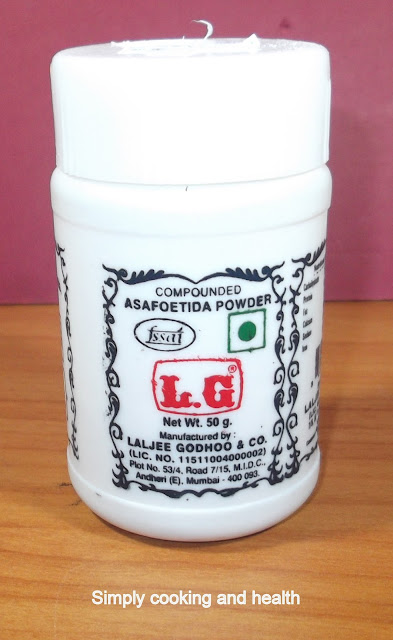 |
| Asafoetida |
It is smelly and because of it some do not like it. I am one of them. It is used as a taste enhancer in Indian cuisine. It is somewhat addictive. There are many who are addicted to it and they cannot give it up.
Benefits
relieves epilepsy
antimicrobial (used in treatment of swine flu and H1N1 virus)
laxative
anti-inflammatory
expels mucus from the chest
reduce flatulence
prevents digestive disorders
prevents constipation
relieves migraines and headaches
blood thinning agent
heals candida infection
detoxifies long-term alcohol intake
contraceptive properties
excessive and painful menstruation
restart their menstrual periods, if it has stopped
used for mental health (madness)
excellent treatment for reproductive disorders such as sterility
Half a teaspoon of asafoetida mixed with ½ a cup of warm water, when taken orally will relieve leg cramps instantly.
Side effects
vomiting and nausea
throat irritation
swollen lips
flatulence and diarrhoea
skin rashes
Headache and dizziness
Unsafe for pregnant and breastfeeding mothers
oxidizes foetal haemoglobin but not adult haemoglobin
People with blood pressure should not take this.
Anyone with gastrointestinal irritation should avoid this.
In infants it could cause blood disorders.
Some people claim that asafoetida would reduce flatulence and some others say that it would cause flatulence and diarrhoea. This is contradictory. Similarly some say that it relieves migraines and headaches and some others say that it causes migraines and headaches. This is another contradiction. I think that some people are allergic to it.
In cooking it is only used in very small quantity that probably not have any side effects. However to be on the safe side it is better to avoid its use if you have a heart condition or if you are pregnant. It is better not to give it to infants. Use your own judgement.
One of the most important uses of asafoetida is in the making of Hingashtak powder. This powder is commonly used in India for digestive disorders. It is a mixture in equal parts of fried asafoetida, ginger, pippli long pepper, black pepper, ajowan, cumin seeds, nigella seeds (black cumin) and rock salt in equal parts.
No comments:
Post a Comment